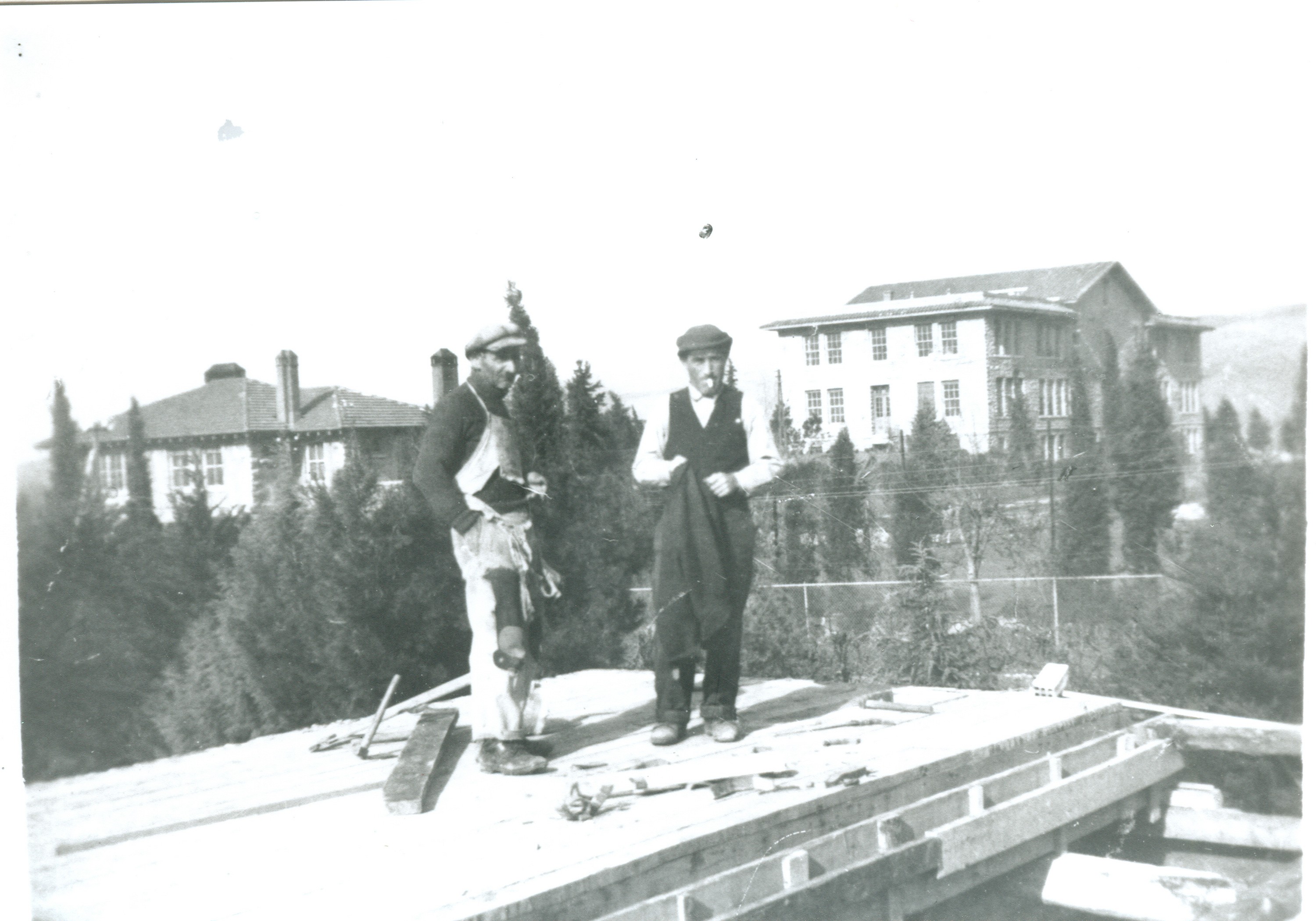Campbell
Campbell was the last and most short-lived Jewish settlement. It was founded after the fire that destroyed the centre of Thessaloniki in 1917 and affected 52,000 Jewish community members. The name is associated with Robert Jameson Neil Campbell, a Levantine of English descent born in the Jewish district of Hasköy in Constantinople, on the north shores of the Golden Horn. Campbell came to Thessaloniki around 1918 and founded a machine shop under the name “Blair Campbell et Cie”. In 1925, the company moved into the old English military camp, founded in 1916 to accommodate the Indian Battalion. The base had an area of about 100,000 square metres (1,076,391 square feet) and was located on the eastern edge of the city, beyond the Depot, on either side of the road to Sedes. The English had built wooden houses with standard dimensions of about 25 × 10 metres (269 × 108 feet) and brought water from Mount Chortiatis.
In 1927, after consultation with Campbell, the Jewish community acquired its company premises to establish a new settlement. In addition, the community succeeded in expropriating 35 properties that probably belonged to the Kapoutzides (the first inhabitants of the area in the east of Thessaloniki, outside the walls). The purchase price was paid later. Thus, the total size of the Campbell settlement was approximately 185,448 square metres (1,996,146 square feet). The Jewish community had managed to pay only for 76,945 square metres (828,229 square feet). The decree for the expropriation of the land was issued on March 2, 1928. According to Campbell’s testimony, in a letter to the president of the community, the original plan included the creation of a model settlement for the middle class, which explains the elaborate urban planning. Eventually, however, pressing needs forced the Jewish community to relocate some 210 destitute families, making Campbell one of the poorest settlements on the city’s outskirts. The new residents gathered in the area of the old military camp, approximately on the borders of the current Kaisareias, Anatolikis Thrakis, Karavangeli, Ethnikis Antistaseos, Lassani and Aristotelous streets. This space corresponded to the paid part.
Most Jews were day labourers and were forced to flee Thessaloniki after the great fire of 1917. However, for the city’s nationalist circles, Campbell’s Jews were part of a larger Zionist conspiracy aimed at handing over Macedonia to Bulgaria. This baseless rumour had greatly upset the Greeks. The local press (especially the newspaper “Makedonia”) fueled the tension with articles on the betrayal of the Jews.
The campaign was supported by the National Union of GreeceNational Union “Hellas” (EEE in Greek), the most prominent interwar anti-Semitic and fascist organisation in northern Greece. The EEEE was founded in 1927 by Asia Minor merchants in response to alleged Jewish trade rivalry but became notorious for its paramilitary activities and violent attacks on Jewish community members. For example, on the night of July 29, 1931, members of the EEE (known as “The Three Epsilons” or “The Steel Helmets”) led a group of 2,000 refugees to loot Campbell. They set many Jewish homes and shops on fire and destroyed the synagogue, the school, the pharmacy, and the house of Rabbi Michael Pessa. Five people were injured, and a Christian, the baker Leonidas Pappas, was killed trying to protect his neighbours’ properties.
The Jewish residents of Campbell left the settlement the next day and never returned. The local authorities showed no interest in preventing the attack (although they knew it was imminent) or in punishing the instigators despite the strong protests of the Israeli Community of Thessaloniki.
In 2020, on an initiative of the Historical Archive of Refugee Hellenism (HARH) initiative, the Municipality of Kalamaria and the Israeli Community of Thessaloniki, a memorial column for the Campbell pogrom was placed at the junction of Ethnikis Antistaseos and Aristeidou streets in Votsis.


